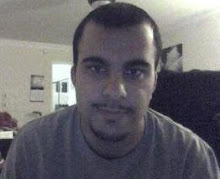- Natural History Museum had its rotunda building renovated
- Replaced incandescent bulbs with LED bulbs
- Saved energy in more than one way
LEDs?
Maintenance workers for the Natural History Museum of Los Angeles County used to have to go up a tall ladder to replace incandescent bulbs hung 30 feet high in the rotunda building several times a week, said Don Webb, president of Cordell Corporation, a boutique firm that manages the development of large assembly facilities such as the museum. Then in April 2008, the museum had Webb’s company replace the incandescent bulbs with 144 different bulbs. Now, maintenance workers won’t have to replace the new bulbs for up to ten years.
The replacement bulbs contain light emitting diodes, or LEDs. They are primarily a light source, but have also ventured into the medical and traffic safety fields. When used in bulbs, a cluster of LEDs serve as the source of light as the filament does for a regular bulb. LEDs are the tiny lights often seen in electronics such as multiline telephones, in which the little red light means someone is on a particular line, or the small light on a stereo or television that tells you its on. Individually, they are no bigger than a jellybean. But when many LEDs are put together in a larger product array, they can serve as the television screen itself.
The Change
This isn’t why the Natural History Museum chose LEDs over compact incandescents though. Changing bulbs was becoming too labor-intensive, said Webb. So instead of having someone continue to change the lights multiple times every week, the museum replaced the incandescent bulbs with a set of “theatrical bulbs with custom LED fixtures that look identical to those original bulbs,” he said. The application of theatrical bulbs is architectural, to give a desired lighting effect as on movie sets. Webb said the challenge was replicating the look that the previous bulbs gave. The architect of the building originally set up the lights in a certain fashion that gave the exhibits the intended historical appearance. Even a slightly different look was not good enough. The LED bulbs were perfect, said Webb.
“They really do look identical,” Webb said—the same shape, color and warmth of incandescent. But at only 1.5 watts each, LEDs have a much greater lifespan.
The museum, located on Exposition Boulevard in Los Angeles near the University of Southern California, houses more than 35 million specimens and artifacts. It’s the largest natural and historical museum in the Western United States, containing exhibits ranging from insects to dinosaurs and Native American displays to Hollywood memorabilia.
Human Energy
Webb said that while they were doing major renovations on the rotunda building, they looked at the light fixtures and decided that they wanted more energy conservation from them. But the LEDs saved the museum energy in more ways than one, he said.
Before the LEDs were installed, the building’s substantial number of 150-watt incandescent bulbs, which generate light by heating up, produced a lot of heat, Webb said, so the museum had to specially air-condition the building. LEDs are lit when the semi-conductor, a little electrical chip, in them receives a small amount of current, generating almost no heat. After replacing the incandescent bulbs with LED bulbs, Webb said that the museum also ended up saving electricity for air conditioning, as well as “human energy” from demanding maintenance.
Webb said that the Natural History Museum plans to have Cordell Corp. install LED bulbs in several other locations as renovations continue.







